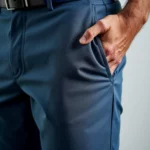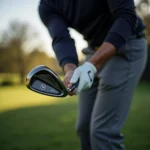Golf is a sport steeped in tradition, elegance, and precision. As any golfer knows, the right equipment can make a significant difference in your game, and one of the most important pieces of kit is your shoes. Golf shoes, particularly those with spikes, have been a topic of discussion for many players. But why are golf shoes spiked? What advantages do they provide? In this guide, we’ll explore the functionality of spiked golf shoes, their history, and why they remain a staple on the golf course today.
The Importance of Golf Shoes
Before jumping into the specifics about spiked shoes, it’s essential to understand the overall importance of golf shoes. Unlike regular sneakers, golf shoes are designed specifically for the unique demands of the game. Here are some key features:
- Support: Golf involves a lot of lateral movement. Golf shoes offer better arch support to maintain balance.
- Comfort: Most golf rounds can stretch over four hours. Comfort is key, and manufacturers focus on cushioning.
- Water Resistant: Many golf shoes are constructed with water-resistant materials to keep your feet dry in wet conditions.
- Traction: This is where spikes come into play, providing grip to prevent slipping during swings.
What Are Spikes and How Do They Work?
Spikes are the small protrusions on the soles of golf shoes that dig into the ground to provide traction. They come in various styles, with the most common being:
- Metal Spikes: Traditional choice, offering superior grip but can damage greens.
- Plastic Spikes: More common today, gentler on the course, and often replaceable.
Benefits of Spiked Golf Shoes
So, why are golf shoes spiked? Here are some compelling reasons:
-
Enhanced Traction
- Stability: Spikes provide a solid grip, reducing the chances of slipping during your swing.
- Power Transfer: A good grip allows for better power transfer from your feet to your swing, enhancing performance.
-
Better Balance
- Lateral Movement: Golf often requires quick lateral movements. Spiked shoes help maintain balance during these motions.
-
Improved Performance
- By reducing the chances of slipping, spikes enable a more consistent swing, which can translate into a lower handicap.
- Course Adaptability
- Different golf courses have varying terrains. Spiked shoes can adapt to soft, wet, or uneven conditions where stability is crucial.
| Characteristics | Metal Spikes | Plastic Spikes |
|---|---|---|
| Durability | Often more durable | Can wear down more quickly |
| Grip | Better overall grip | Decent grip |
| Green Damage | Can damage greens | Less damaging |
| Comfort | May feel cumbersome | Generally lighter and more comfortable |
| Replacement | Difficult to replace | Usually replaceable |
The Evolution of Golf Shoe Spikes
The history of golf shoes is intertwined with the game’s development. Spikes were introduced in the early 20th century, evolving from simple studs to the advanced designs we see today. Here’s a brief timeline:
- Early 1900s: Players used shoes with wooden pegs, unstable but functional.
- 1920s: Metal spikes began to appear, significantly improving grip.
- 2000s: The introduction of soft spikes made golf footwear more course-friendly.
Choosing the Right Spiked Golf Shoes
When it comes to selecting your spiked golf shoes, consider:
- Fit: Comfort is crucial. Make sure to try on various sizes and styles to find the best fit.
- Terrain: Consider the courses you play most often. A region with more mud or grass may benefit from softer spikes.
- Weight: Some golfers prefer lighter shoes for better mobility.
Maintenance of Spiked Golf Shoes
To ensure your golf shoes stay in top condition, regular maintenance is important:
- Cleaning: Remove dirt and debris after each use.
- Spike Replacement: Check your spikes regularly for wear and replace as needed.
- Drying: After a round, remove the insoles and dry the shoes to prevent mold.
Addressing Common Misconceptions about Spiked Golf Shoes
You may have encountered some misinformation regarding spiked golf shoes. Here’s the truth behind some common myths:
-
Myth: Spikes damage greens.
- Fact: Soft spikes are designed to minimize damage, making them acceptable for most courses.
- Myth: You can play without spikes.
- Fact: While some players use regular athletic shoes, they lack the crucial grip needed for optimal performance.
Key Takeaways
- Enhanced Traction: Spiked golf shoes provide superior grip, essential for maintaining balance during swings.
- Lateral Stability: They offer crucial support in your stance, especially during lateral movement.
- Adaptability: Spikes can be chosen based on course conditions to ensure optimal performance.
- Historical Significance: Understanding the evolution of spiked shoes can deepen your appreciation for their design.
- Maintenance Matters: Regular upkeep ensures longevity and performance.
Frequently Asked Questions (FAQ)
-
Are spiked golf shoes necessary?
- While not strictly necessary, spiked golf shoes significantly improve grip and overall performance.
-
Can I wear regular shoes instead?
- Yes, but they may not provide the necessary traction and support for an optimal golf experience.
-
Do spiked golf shoes damage the greens?
- Generally, modern soft spikes are designed to minimize damage to greens.
-
How often should spikes be replaced?
- It depends on wear, but check before each round for visible signs of deterioration.
-
Are spiked shoes heavier than non-spiked?
- Typically, spiked shoes can feel heavier, but variations exist, especially with advancements in materials.
-
What style of spikes should I choose?
- It depends on your playing style and course conditions. Experiment with both metal and soft spikes to see what works best for you.
-
How do I clean spiked golf shoes?
- Clean them with mild soap, warm water, and a soft brush. Don’t forget to check and clean the spikes specifically.
-
Are there any benefits to using metal spikes?
- Metal spikes can offer superior grip on soft and wet courses but often require more maintenance regarding the greens.
-
Can I wear spiked shoes for walking?
- Yes, as long as they are comfortable! Many golfers like to wear them off the course too.
- What should I look for in a comfortable golf shoe?
- Look for good arch support, breathable materials, and the right size for your foot.
By understanding why golf shoes are spiked, you not only improve your game but also enrich your experience on the course. Every golfer’s journey is unique, and having the right footwear can make all the difference. Now that you know the benefits and considerations, it’s time to hit the greens with confidence!
References
- PGA Tour – Golf Shoe Guide
- Golf Digest – Best Spiked Golf Shoes

